Nov 09, 2016
Building on the History of the State Offices of Rural Health: Celebrating 25 Years of Service
by Jenn Lukens
 Collaboration.
Persistence. Creativity.
Collaboration.
Persistence. Creativity.
The State Offices of Rural Health (SORH) Program would never have come about if it weren't for a few people who put these words into action to make it happen.
With North Carolina leading the way in 1973 as the first SORH, other states also created offices to address critical rural health issues, with Wisconsin, Nevada, North Dakota, Arizona, and Georgia being some of the earliest in the '70s and '80s. It was the late 1980s when a few of these already-established SORHs put their heads together with Jerry Coopey, one of the original staff at the Federal Office of Rural Health Policy (FORHP), to find a way to build a State Office of Rural Health in every state.
By 1991, the necessary legislation had been passed and FORHP began offering grants that funded a SORH in all 50 states. What was once a dream became a reality.
Teryl Eisinger, Executive Director of the National Organization of State Offices of Rural Health (NOSORH), was working for the Nevada State Office of Rural Health at this time. She clearly remembers the tenacity of Coopey and the state office leaders that drove the dream. “They had a strong vision for what they wanted to accomplish,” relays Eisinger. “They doggedly worked to ensure appropriations for the Federal Office of Rural Health Policy.”
This year marks the 25th anniversary of the Federal Office of Rural Health Policy's State Office of Rural Health Program. In the past quarter of a century, SORHs have built capacity, strengthened rural healthcare delivery systems, facilitated networking, provided resources, conducted needs assessments, and much more. The federal program allows SORHs the flexibility to keep their finger on the pulse of rural health issues in their own state and to address key issues in a way that works for their rural communities.
Finding Support from NOSORH
NOSORH came into being in 1995 as a national membership organization of SORHs that provides guidance and resources for each state office. NOSORH designs programs and initiatives that boost the efforts of their 50 state offices. “Because we are small, we can adapt to what they need,” explained Eisinger. “State offices have a unique role. It's not their job to provide care; it's their job to coordinate, to disseminate information, and to provide technical assistance. So we really try to come behind them and ahead of them to support all of the work that they do.” Through a variety of means, NOSORH facilitates collaboration and the sharing of resources and best practices from state to state.
At the national level, NOSORH and its members and partners are celebrating National Rural Health Day on November 17, 2016. This is a day dedicated to rural health appreciation and awareness. Informational webinars, a “community stars” e-book, and a pledge to improve rural health are new additions this year.
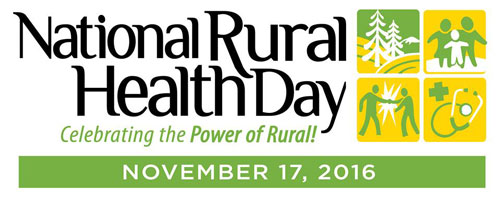
Applying Creativity to Meet Rural Needs
One requirement of the SORH grant is that each state is required to come up with a 3:1 match.
“This is a unique example of federal and state partnership coming together to meet needs of rural communities,” noted Eisinger. These match dollars come in through a variety of sources – foundations, state appropriations, and the like – to best meet their communities' needs. The sources are largely dependent upon the location of the SORH offices. While the majority are located in health departments, 10 are in university settings, and three are independent nonprofits.
Every State Office of Rural Health really does have a story to tell, a challenge they have overcome, and something they are particularly dialed in on to improve rural health in their state.
Eisinger is encouraged by the creativity state offices show in the utilization of their funds. “Some of the best solutions come from the communities, the state offices, and local collaboration,” she said, commending each office for their work and successes. “Every State Office of Rural Health really does have a story to tell, a challenge they have overcome, and something they are particularly dialed in on to improve rural health in their state,” said Eisinger.
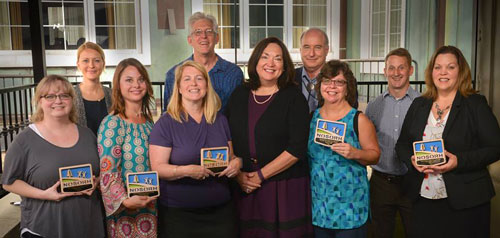
Below are three examples of state offices that are leveraging their SORH funding to address the specific needs of rural communities within their states:
Developing Rural Workforce in Minnesota
The Minnesota Office of Rural Health and Primary Care (ORHPC) was founded in 1992 as a platform for transformation and stability of the state's rural health infrastructure. Their location in the Minnesota Department of Health creates natural opportunities to make the case for rural with elected and appointed public officials. “Our role is to tell the story of rural health to policymakers and leaders and promote that rural locations are always a good place to work,” said Mark Schoenbaum, Director of the Minnesota ORHPC since 2005.
Our role is to tell the story of rural health to policymakers and leaders and promote that rural locations are always a good place to work.
Recently, workforce has been a strong focal point of their efforts. In 2015, the state legislature increased appropriations for workforce development. Using these funds, the Minnesota ORHPC has developed a tracking method to collect provider licenses and related information and a data tool that organizes that information for public use. This tool and their thorough fact sheets and reports are used by legislators, reporters, workforce planners, hospital administrators, and researchers across the state. They also offer funding to educate and attract rural physicians, including a rural family medicine residency grant program and a loan forgiveness and repayment program.
As Minnesota has become home to a growing number of refugees and immigrants, rural communities are being impacted. “There is such an opportunity here,” emphasized Schoenbaum. “Minnesota's state demographer has clearly established that the only way our state has kept jobs filled, and the only way to continue that, is through immigration. So creating opportunities for new Minnesotans to join the rural health workforce is foundational.”
Because of this reality, Schoenbaum's team assists immigrant physicians in becoming licensed to practice medicine in Minnesota. Emerging professions, such as community health workers and community paramedics, are also becoming more popular methods of addressing rural health professional shortages and bettering health outcomes in Minnesota.
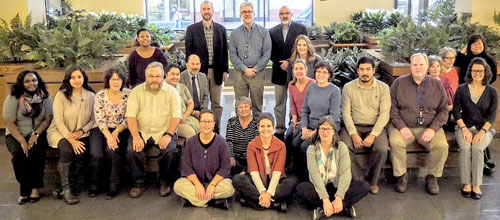
Improving Population Health in South Carolina
Established in 1991, the South Carolina Office of Rural Health (SCORH) was transferred a few years later out of the State Health Department and is now one of three state offices that operates as nonprofit organization. Their main focus is ensuring access to quality healthcare for their state's rural communities.
One of the biggest challenges in South Carolina is the financial viability of rural hospitals. South Carolina has had three hospital closures since 2011. Graham Adams, SCORH's Chief Executive Officer, points out that these closures are often connected to the population's demographics and social conditions, including high rates of poverty. “We're trying to figure out how to support those communities that have lost their hospital, as well as how to bolster struggling facilities as they move forward.” He added, “When a hospital does unfortunately close, we strive to provide the community with other options for care delivery, especially emergency care.”
As one solution, SCORH issues low-interest loans to help rural providers fund things like construction projects, renovations, equipment, telehealth, and electronic medical records (EMRs). So far, SCORH has facilitated more than $130 million in capital and helped to save or create 805 healthcare jobs.
South Carolina currently ranks 42nd in the nation in health status. Much of SCORH's focus is aimed at trying to improve population health through programs such as Family Solutions of the Low Country/Healthy Start, Nurse-Family Partnership, and the establishment patient-centered medical homes (PCMH) through SCORH's Center for Practice Transformation. There are now over 200 PCMHs in South Carolina and SCORH is taking multiple approaches to improve access to high-quality healthcare.
One of the things that I find so nourishing about this work is the fact that people are willing to share their ideas – what works well and doesn't – with each other. So often, you run into competition between health systems. We don't have to worry about that in the SORH community.
In the past few years, SCORH has had a particular focus on integrating oral health in primary care settings. With funds from the DentaQuest Partnership for Oral Health Advancement (now part of CareQuest Institute for Oral Health), they pair quality improvement coaches with rural clinics to implement oral health practices such as providing education and applying fluoride varnish as appropriate. “Often, a physician may not even look at your mouth – it's not something they have received a ton of training in. But it's a huge issue in rural settings and certainly a reason why folks end up in the ER, so we are trying to be helpful in linking the primary care and dental communities,” said Adams.
Adams attests that the collaboration efforts between state offices has been key in their success. “One of the things that I find so nourishing about this work is the fact that people are willing to share their ideas – what works well and doesn't – with each other. So often, you run into competition between health systems. We don't have to worry about that in the SORH community.”
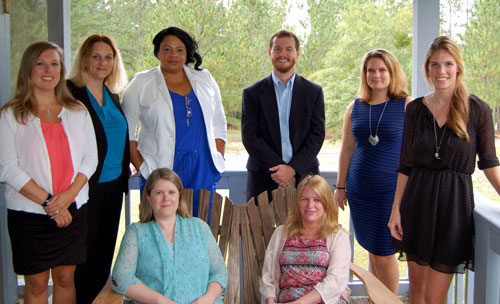
Assessing Community Needs in Oklahoma
Originally established in 1991, the Oklahoma Office of Rural Health (OORH) has operated out of the Oklahoma State University's Center for Health Sciences since 2002, after transition from the Oklahoma State Department of Health. Long before the Affordable Care Act (ACA) required them, OORH actively engaged rural communities in the gathering of information regarding their population's health and needed services through Community Health Needs Assessments (CHNAs).
“There are a lot of organizations working together toward a common goal, but often they're doing it on their own,” said Corie Kaiser, Director of the OORH. “These assessments bring the community together to figure out how to best use their talents to address a certain need.”
Each CHNA includes four meetings over a period of several months at local hospitals. Community groups and individuals are invited to attend the sessions where discussions center around health concerns and top priorities, allowing everyone to voice their opinions and offer suggestions. Surveys are also sent out electronically and via hardcopy.
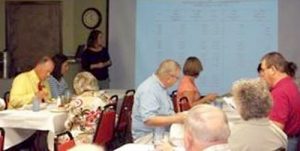
The CHNAs measure health factors and outcomes, evaluating primary care physician demand; hospitalization utilization; and patient satisfaction, concerns, and priorities. For instance, in the last CHNA, there was a common concern regarding mental health and substance/opioid abuse. The OORH office uses data like this to help each community develop a strategy that addresses their concerns, improves the health of their local population, and advances healthcare services.
OORH helps communities understand the positive effects of healthcare providers through economic impact studies with IMPLAN, a software purchased to produce data analyses in-house. Although impact studies are not required by the IRS, the OORH office sees it as a valuable way to quantify the impact that the healthcare sector has on the local economy.
The data is used in a variety of ways. Hospitals report statistics to make their case for local sales tax increases. An Oklahoma taskforce is currently using the data to back their funding requests to the federal legislature. The results are also brought before local communities to increase awareness of the positive impact their hospitals are having on the economy.
“It's a way to let people know that they have these jobs and millions of dollars circulating in their community because of this hospital. If the hospital wasn't there, they wouldn't have the clinics. And if the clinics weren't there, the pharmacists wouldn't have any patients. It's a ripple effect,” stated Kaiser.
A 25-Year Milestone
Celebrating 25 years of service in rural health naturally leads to reflecting on the past and anticipating the future. But right now, Eisinger is proud of the present:
What I see now is a group of energetic leaders; young and experienced working together, learning from each other. I see a promising network that is growing a fervor for rural health in different ways than their predecessors…I see the value of what a State Office of Rural Health does in making a difference in rural places across the nation.
“What I see now is a group of energetic leaders; young and experienced working together, learning from each other. I see a promising network that is growing a fervor for rural health in different ways than their predecessors. They are figuring out ways to use data that makes business sense and provides evidence for the work they do. I see people willing to innovate and take advantage of new opportunities. They are learning new ways to collaborate. I see the value of what a State Office of Rural Health does in making a difference in rural places across the nation.”
Happy 25th anniversary to the State Offices of Rural Health.
